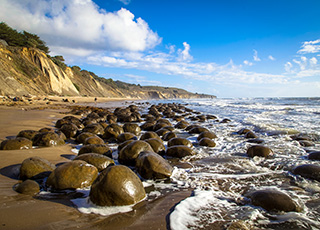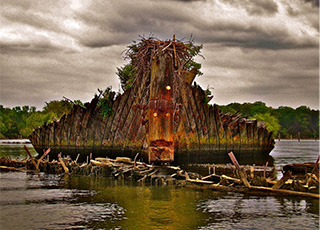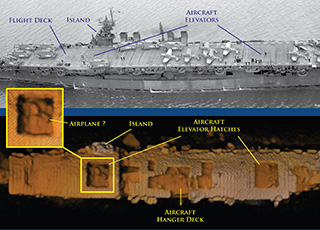
Cordell Bank and Gulf of the Farallones national marine sanctuaries more than doubled in size on June of 2015. As a result of the expansion, Gulf of the Farallones National Marine Sanctuary is now known as Greater Farallones National Marine Sanctuary. The expansion is based on years of public comment and research by NOAA and its scientific partners that identified the nutrient-rich upwelling zone originating off Point Arena and flowing south into the original sanctuaries as one of the most productive in North America. The area supports a vast array of sea life including whales, seals, dolphins, sea lions, seabirds and white sharks.

NOAA’s Office of National Marine Sanctuaries received the first nominations of places for consideration as potential new national marine sanctuaries. After an extensive public process, NOAA launched a new, locally driven sanctuary nomination process in June 2014. NOAA is reviewing submitted nominations to determine whether they successfully meet the national significance criteria and management considerations described in the sanctuary nomination process. As of July 2015, NOAA has determined the nominations for Mallows Bay – Potomac River (Maryland) and Lake Michigan (Wisconsin) have met the criteria. The successful nominations are entered into the inventory for consideration by NOAA for national marine sanctuary designation. Sanctuary designation is a separate public process that by law, is highly public and participatory, and often takes several years to complete.

NOAA, working with private industry partners and the U.S. Navy, confirmed the location and condition of the USS Independence, the lead ship of its class of light aircraft carriers that were critical during the American naval offensive in the Pacific during World War II. The Independence rests upright in 2,600 feet of water off California’s Farallon Islands. The story of the USS Independence generated more than 13,400 news stories and more than 900 million story impressions. NOAA’s Office of National Marine Sanctuaries’ (ONMS) social media posts about the Independence resulted in 1,924 Twitter engagements and 4,732 Facebook likes, comments and shares. A team of researchers led by ONMS also discovered two significant vessels from World War II’s Battle of the Atlantic. The German U-boat 576 and the tanker Bluefields were found approximately 30 miles off the coast of North Carolina. Lost for more than 70 years, the discovery of the two vessels, in an area known as the Graveyard of the Atlantic, is a rare window into a historic military battle and the underwater battlefield landscape of WWII.

In support of the Administration's priorities related to promotion of outdoor recreation and tourism, NOAA’s Office of National Marine Sanctuaries (ONMS) coordinated a series of National “Get into Your Sanctuary" activities in June 2015 to encourage public awareness of sanctuaries as iconic destinations. Every sanctuary in the country conducted social media outreach during the month of June to promote corresponding National “Get into Your Sanctuary” Day events that occurred from June 27-28th, 2015. The events were also featured as part of Great Outdoors Month and involved opportunities for the public and Members of Congress to “get into” their sanctuaries. Sites across the sanctuary system welcomed more than 3,700 people to public activities.
ONMS social media channels used the hashtag #VisitSanctuaries to highlight recreational activities that sanctuary visitors can responsibly enjoy and share messages about how place-based conservation can contribute to sustainable tourism. The #VisitSanctuaries hashtag reached 914,247 Twitter users throughout the month of June.
 An official website of the United States government.
Here's how you know we're official.
An official website of the United States government.
Here's how you know we're official.



